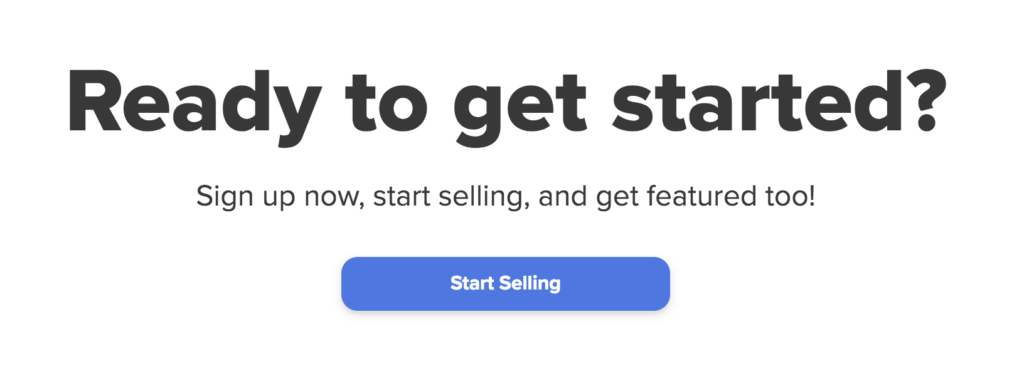09 PERSONAL reasons why I’m going ALL IN with Wirestock
TL;DR: I took a personal decision to go ALL IN with Wirestock and I have 9 reasons why:
- PRO #1: Wirestock uploads to multiple agencies
- PRO #2: Wirestock supports both Photos AND Videos
- PRO #3: They Write Metadata For You
- CON #1: You upload to their own username, but…
- PRO #4: They offer portfolio pages
- CON #2: There’s a commission, but…
- PRO #5: You end up earning more
- PRO #6: More selling opportunities
- PRO #7: Wirestock has a Digital Releases system
- PRO #8: You can upload straight from your browser
- PRO #9: Wirestock’s Mobile App
Ok, Wirestock… Well, by the tone of my “happiness” you might think I was paid to say this, but that’s not the case. This is just me happy that someone has finally made life easier for us. By the end of this article you’ll realize why I think these guys will change the game for us stock creators.
*However, I do use affiliate links on products and services I believe.
But who cares about my personal opinion right? So let’s head to the facts – 2 CONS and 9 PROS about Wirestock.
Wirestock’s PRO #1: Upload to multiple agencies
Starting with the most obvious one. Wirestock can be used to upload your stock files to multiple agencies at once (because, as you know, submitting your files to multiple agencies is the best way to maximize your stock earnings).
So instead of doing the manual process inside each agency’s website, you can use Wirestock to submit your photos & videos to multiple agencies at once.
At the time of this writing, that means: Shutterstock, Adobe Stock, Alamy, Dreamstime, DepositPhotos, and Pond5.
And you can always choose which agencies you want them to submit your files to. That’s useful to avoid duplicates if your files are already online in any of these agencies.
Extra #1:
And actually, it goes beyond that because of 2 other programs called Instant Pay and Extra Channels. These features increase the earnings potential but I’ll tell you more about it later. The cool thing about these programs is that your files might also be available at other stock agencies like 123RF and Canva.
Extra #2:
Another important reminder is the partnership between Pond5 and Vimeo Stock. So chances are your video files will also be sent to Vimeo Stock.
Wirestock’s PRO #2: Images *AND* Videos
Also good to mention that Wirestock is also one of the few services that allows submission of both Photos & Videos.
Aggregators (like BlackBox for example) are usually focused on Photos OR Videos only.
Wirestock’s PRO #3: They Write Metadata For You
Now, my favorite feature of ALL and one that I haven’t seen before is that THEY WRITE METADATA FOR YOU.
Yes guys, you heard read it right. The feature is called “Easy Submission”
In a round of questions I made to the company, CEO Mikayel Khachatryan, told me that Wirestock has a team of metadata experts placed in countries all over the world. They choose to do so to guarantee metadata quality no matter where you shot your content or the cultural specifics of that area.
So by mixing human curation + keyword presets + technology, the whole process can be done with speed and quality.
That means all you need to do is to simply upload your files to Wirestock, attach releases if needed, and make sure the Easy Submission button is on. And you’re done, their team will take care of the rest.
Manual Metadata
It’s good to notice that Easy Submission is just a shortcut to get your stuff online faster. But in some cases, it might not be the best idea. Especially if you enjoy writing metadata or if the subjects you shoot are way too specific.
In these cases, all you need to do is to turn off the “Easy Submission” button. That will allow you to manually write your metadata. Also, notice that the “Easy Submission” feature is not available for Editorial content. At least not at the time of this recording.
Still, this is an amazing feature to get your files online fast and the Wirestock team keeps increasing the quality and speed of their metadata. I’ve got to say that I haven’t seen a solution like this before.
Wirestock’s CON #1: Their Own Username
Now, one thing that might be seen as a downside is that your files will be published in behalf of Wirestock, instead of your own portfolio. So whenever a photo or video you uploaded is found on Shutterstock, for example, it’s Wirestock’s name that will be there, not yours.
Personally, I don’t think that’s a big deal. You probably would like to have your name on your photos, I get that. But a stock agency is not really a trending social network or a hype gallery to get your work exposed.
And I guess that is the reason why Wirestock created a feature called portfolio pages.
Wirestock’s PRO #4: Portfolios
The portfolio page is a link of your own that you can share and promote on your social networks. This is where all your approved content will be organized and where direct customers can buy your content.

Right now, if someone clicks “buy” they’ll be redirected to Adobe Stock, but the company plans to implement the ability to buy directly from Wirestock soon. And that also means a higher commission for the creator behind it.
Wirestock’s CON #2: Commission
You must be thinking: “Cool, but where’s the catch? How does Wirestock make money?”
Well, there’s not exactly a price. Registering and using Wirestock, right now, is free. And you can do so by clicking here.
Wirestock makes money through a commission. They earn 15% of the earnings generated by your files, according to their site..
Now, some contributors tend to give up after knowing that. But there’s something VERY important that has to be taken into consideration. And that’s the potential of earning more, despite Wirestock’s commission.
Let me tell you how.
Wirestock’s PRO #5: Earn even more
Wirestock has a giant portfolio made of files from multiple users. And that gives them commission rates with the agencies you could hardly find by yourself.
Shutterstock Changes
You might have heard about Shutterstock and the terrible changes they did on the commission structure. Every new year, all contributors will go back to level one, which means a commission of 15%.
It will take you 500 downloads to then get back to level 4 and earn 30%, which used to be the standard.
Now Shutterstock is just one example. Unfortunately more and more agencies are doing the same, like Alamy for example.

The Wirestock Advantage
On the other hand, if more and more contributors unite under Wirestock’s portfolio, it will quickly rank as a level 6 contributor earning 40%.
The difference is huge. Let’s take a $100 sale as an example:
- If you are a level 1 contributor on Shutterstock, you’ll get 15%. That’s $15.
- If the same sale happens inside Wirestock, which is probably on level 5 or 6, that would mean $35 or $40, depending on which level they are. Take away their 15% commission rate, and you’ll end up with something around $29.75 and $34.
For most of us, it might mean up to 225% more.
And that is the thinking behind my personal decision of going all in with Wirestock. Not only does it save a lot of time, as the earning potential in Wirestock is higher too.
At this moment, the commission rate is marked as 15%, but I have no idea if they will change it for users subscribing later. So I highly encourage you to create your account at their website.
Wirestock’s PRO #6: More selling opportunities
As said a little ago, Wirestock opens extra opportunities to make more money with 2 programs called Extra Channels and Instant Pay Program.
The company has a Sales team that works directly with Ad agencies, brands and web platforms to get the Wirestock content sold directly. In these cases, instead of getting the average 30% we usually get from agencies, we the contributors get 50%.
Based on what other users told me, this income source is bringing an average per sale that is 7x higher than they get from other agencies.
Wirestock’s PRO #7: Digital Releases
Another feature I love on Wirestock is their Digital Releases system. It is pretty similar to the one Shutterstock got.
It means you don’t need to handle model & property releases on paper anymore. All you need to do is to fill in basic info including the model’s email. The model will then receive a link where he can sign the release digitally.
Once it happens, you will be notified and able to add that release to its respective files and you’re good to go.
Seriously guys… ask anyone who used to work with paper releases and they’ll agree how revolutionizing digital releases are.
Wirestock’s PRO #8: Upload from Your Browser
Wirestock also allows you to upload your photos & videos straight from your browser. This is pretty standard for photos, but when it comes to video files, most agencies require you to upload your files via FTP. Which is not a problem, but it’s cool to be able to save this time.
Not only that, you can also upload files straight from your Google Drive or Dropbox account.
Wirestock’s PRO #9: Mobile App
And finally, there’s the Mobile App.
Believe me or not, mobile apps are still a rare thing among stock agencies. Right now, Shutterstock is probably the only agency with an app for contributors.
Wirestock’s mobile app is super handy to increase your productivity. Not only will you be able to get releases signed from it, check your earnings and the status of your uploads as you’ll also be able to upload photos & VIDEOS you took from your phone.
The app is currently being beta tested Wirestock’s Slack Community, so be sure to register as soon as possible to be notified when it happens.
Conclusion
These were only a few points I wanted to mention about Wirestock and why I’m choosing it as my master tool when it comes to stock submission. Feel free to write down all your thoughts, questions, and critics in the comment section down below.
*Disclosure: I only recommend services I use myself and all opinions expressed here are my own.
This post may contain affiliate links in which I may earn a small commission at no additional cost to you,.















